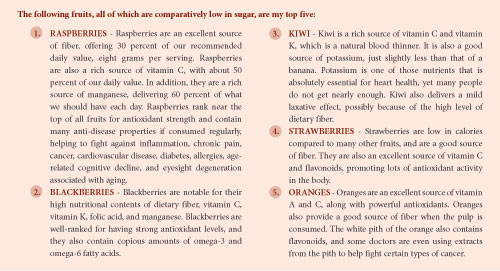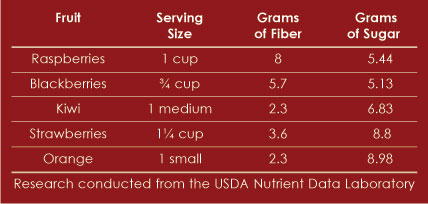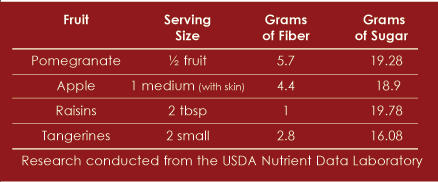We really should be smart about the fruits we consume. After all, remember that fruits are very similar to breads, pastas, rice, and other high carbohydrate-rich foods in that fruits are high in carbohydrates. That is one reason why we should only consume a certain amount, and choose the fruits that are lower in sugar. If you pick the right fruits and eat the proper portions, then you will give your body what it needs and it will benefit greatly from your efforts.
With today’s epidemic of diseases at an all time high people are starting to question which fruits are going to give them the biggest bang for their calorie buck.
Even so, more and more people want to know which fruits are worth spending their hard earned money on. Each person needs to consider their personal health and their biggest health concerns. Some people might be concerned with their weight others might be concerned with diabetes, cancer, liver, or heart disease. Whatever the case, the most important question to ask is, “Are there certain fruits that are superior to others in offering a greater number of nutrients and antioxidants with the least amount of strain on your body?”

Let us look at fiber and sugar values for these five fruits, which are tauted to be the “Top 5 Fruits to Eat Daily.”

What implications do these numbers have? Consuming any food item is creating work for your body. Keeping in mind that we should always be concerned about body weight, diabetes risk, heart health, liver health, and most importantly preventing the dormant cancer cells in all of our bodies from birthing
into tumors.
Sugar
The sugar content of fruits is referred to as Fructose, fruit sugar. It is a relief that it does not set off a glycemic peak in the blood, because all fructose must be metabolized in the liver. But, high levels of fructose were implicated in other health concerns. Meira Field, Ph.D., a research chemist at U.S. Department of Agriculture states that the livers of rats on a high fructose diet looked like the livers of alcoholics, plugged with fat and cirrhotic. Such high levels of fructose, may contribute to the development of non-alcoholic fatty liver disease. “When fructose reaches the liver,” says Dr. William J. Whelan, a biochemist at the University of Miami School of Medicine, “the liver goes bananas and stops everything else, simply to metabolize the fructose. Eating fructose instead of glucose, results in a lower circulating insulin and leptin levels, and higher ghrelin levels after the meal.”(1) Since leptin and insulin decrease appetite and ghrelin increases appetite, some researchers suspect that eating large amounts of fructose increases the likelihood of weight gain.
Another concern for patients would be the effect of fructose on digestive health. Fructose absorption occurs via the GLUT-5 transporter, and the GLUT-2 transporter, for which it competes with glucose and galactose. A deficiency of GLUT-5 may result in excess fructose carried into the lower intestine. There, it can provide nutrients for the existing gut flora, which produce gas. It may also cause water retention in the intestine. These effects may lead to bloating, excessive flatulence, loose stools, and even diarrhea depending on the amounts eaten and other factors. For many people, fructose malabsorption is a major health concern.
Obviously eating any fruit over packaged items with the man-made high fructose corn syrup is the best choice. But, while making daily choices for fruit consumption it would be wise to keep in mind the metabolism of fructose and how higher levels effect your liver health, digestive health, and overall weight.
Fiber
Consuming more and more fiber seems to be an increasing habit of many health conscious individuals. Research has shown that fiber may benefit health in several different ways. These are the important benefits:
- may reduce appetite
- lowers variance in blood sugar levels
- reduces risk of heart disease
- may reduce onset of risk or symptoms of metabolic syndrome and diabetes
- alleviates constipation
- may reduce risk of colorectal cancer
Picking higher fiber fruits that in turn also are relatively low in sugar is the key combination of a good fruit choice. And, that is the biggest reason why these specific fruits are getting glory for being the top five fruits to eat daily. High Antioxidant Levels Completes This Health Triangle
The kicker to this whole equation is that your fruit choice should be power packed with the most effective antioxidant levels. Polyphenol antioxidants have a chemoprotective effect in cellular models by reducing oxidative stress. Relatedly, flavonoid antioxidants have potential to be biological “response modifiers,” such as anti-allergic, anti-inflammatory, anti-microbial, and anti-cancer activities shown from in vitro studies.(2) High antioxidant levels inhibit promotion and progression of tumor cells by:
- Stalling growth of pre-malignant cells.
- Accelerating the rate of cell turnover, called apoptosis, effectively making the cancer cells die faster.
- Reducing inflammatory mediators that initiate tumor onset.
- Inhibiting growth of new blood vessels that nourish tumors, a process called angiogenesis.
- Minimizing cancer-induced DNA damage.
Raspberries, Blackberries, Kiwi, Strawberries, and Oranges rank highly among fruits for antioxidant strength, particularly due to their dense contents of polyphenolic and flavonoid compounds. There are other fruits that have high levels of these compounds, but the amount of sugar and fiber is not at the optimal level that these top five fruits offer.
Let us look at sugar and fiber values for the four fruits, which I suggest are not fruits that are worth eating regularly, but ‘every once in a while.’

Let’s face it folks, most fruits have high levels of antioxidant compounds, but these four fruits (pomegranate, apple, raisins, and tangerines) do not offer the optimal level of sugar and fiber. Keep in mind that the portions listed are the portions that provide you with 15 grams of carbohydrates per serving. It is a realistic way to be able to truly compare each fruit for what it provides. I am sure I will get barks from the promoters of these fruits, but I feel that this is important information that all consumers should be aware of. All fruits are not created equal and that is why eating the wrong ones can actually do you more harm than good.
It would be a very effective habit to consume powerful anti-cancer fruits with the least amount of fructose to metabolize. This is practical information that allows for realistic living.
Sources:
(1) Teff, KL; Elliott SS, Tschop M, Kieffer TJ, Radar D, Heiman M, Townsend RR, Keim NL, D’Alessio D, Havel PJ (June 2004). “Dietary fructose reduces circulating insulin and leptin, attenuates postprandial suppression of ghrelin, and increases triglycerides in women”. J Clin Endocrinol Metab. 89 (6): 2963-72. http://jcem.endojournals.org/cgi/content/abstract/89/6/2963
(2) deSousa RR, Queiroz KC, Souza AC, Gurgueira SA, Augusto AC, Miranda, MA, Peppelenbosch MP, Ferreira CV, Aoyama H. (2007). “Phosphoprotein levels, MAPK activities and NfkappaB expression are affected by fisetin”. J Enzyme Inhib Med Chem 22 (4): http://informahealthcare.com/doi/abs/10.1080/14756360601162063
(3) David Servan-Schreiber, MD, PhD. Anticancer A New Way of Life. Pp50. ISBN 978-0-670-02164-2.
Iva Young was born in Munich, Germany, and her family moved to Toronto, Canada, when she was two years old. Her parents grew up in Croatia, so she grew up eating traditional high-fat Croatian and German meals. That upbringing helped spark her passion for nutrition and natural health. She holds a bachelor’s degree in Kinesiology and health promotion from California Polytechnic University.
Want to read more?
Subscribe to one of our monthly plans to continue reading this article.